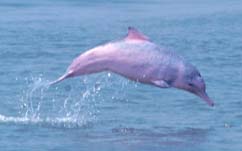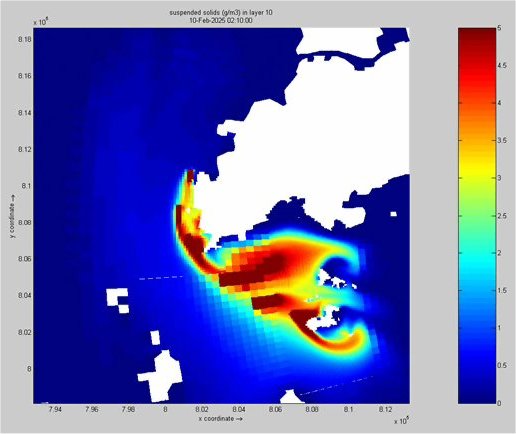Fast and robust solver for the advection-diffusion equation
Paulien van Slingerland
Site of the project:
WL | Delft Hydraulics
Rotterdamseweg 185
2629 HD Delft
start of the project:
September 2006
In December 2006 the
Interim
Thesis has been appeared
and a
presentation has been given.
The Master project has been finished in June 2007
by the completion of the
Masters Thesis and a final
presentation has been given.
For working address etc. we refer to our
alumnipage.
An
article (Dutch) about the work of Paulien has been published in the
Delta of March 13, 2007.
On
March 27 2007, Paulien has given a
presentation
at the Second international conference on high order
non-oscillatory methods for wave propagation, transport and
flow problems' to be held at the University of Trento from
March 26 to 30 2007.
Summary of the master project:
At present, plans are being made for the construction of Liquefied
Natural Gas pipes in the sea bed off the coast of Hong Kong. To this
end, dredging is necessary which causes plumes of silt in the water. The
silt particles float in the water for a relatively long period of time,
until, eventually, they settle on the sea bed. Unfortunately, both
phenomena are in general harmful to coral reefs and Chinese white
dolphins, two protected species that live in the sea near to Hong Kong.
So, before the plans can be carried out, it is necessary to determine
how much of the ocean may be affected by those plumes.


Fortunately, software is already available for this purpose.
Delft3D-WAQ,
a simulation program that has been developed by WL|Delft Hydraulics, is a useful tool in forecasting water quality. In
particular, it is able to predict the size of silt plumes caused by
dredging.
Basically, the software approximates the solution of the advection
diffusion equation by means of the finite volume method.
Since it is often necessary to predict one or two years ahead, large
time steps are prefered in order to have limited computing time.
However, there are two aspects that need improvement. First of all, the
current schemes are either expensive explicit higher
order schemes or inaccurate implicit first order schemes. Moreover, the
convergence speed of the present
solver for linear systems is unsatisfactory for diffusion dominated
problems.
In this study, answers to the following questions will be
sought:
-
What are the possibilities for an accurate finite volume
scheme for the advection diffusion equation on an unstructured
three-dimensional grid that has a high upper bound for the time step?
- How can the convergence speed of the current linear solver
be increased for systems resulting from diffusion dominated problems?
In other words: Can the eventual damage done to dolphins and coral reefs be
estimated better and faster?
Click on the figure below to see the movement of the
silt plumes due to the tidal effect.
WAQ's forecast of the silt plumes


Contact information:
Kees
Vuik

Back to the
home page
or the
Master students page of Kees Vuik



![]()
![]()